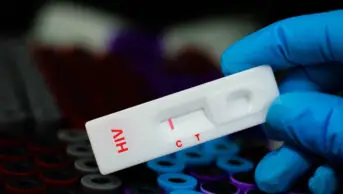In 2020, the medical and research communities have scrambled towards finding an effective intervention against the novel coronavirus, COVID-19. And in lieu of data from randomised controlled trials (RCTs) of interventions against the disease (considered the gold standard of evidence), clinicians were forced to consider lesser forms of evidence, and prescribe ‘off-label’ — the sometimes controversial practice in which a drug is prescribed outside of its original licensed intention.
The pandemic has forced us to challenge our usual philosophy of evidence-based medicine (EBM), and has thrust the ethics of off-label drug use into our consciousness.
But imagine that had we been well prepared before the pandemic hit: would relying on EBM to tackle the virus have been the best approach? Plainly, RCTs are fallible.
The RCT is designed in such a way that reduces bias, but bias can still enter the trial and have an impact on the outcome[1]
. For example, even in double-blind trials, both doctors and participants may be able to successfully guess which treatment group they are in, and their behaviour can affect the results[2]
.
Another problem with RCTs is that their participants are often from a narrow population set, often young and healthy men[3]
. A trial’s inclusion and exclusion criteria cause bias from the start, and can lead to misled inferences, since participants do not accurately represent the people clinicians face in day-to-day practice[4]
,[5]
,[6]
. In real life, cases are much more nuanced and idiosyncratic.
The pandemic has shown we need more creativity in clinical practice. Clinicians practised creatively to deal with the diversity of patients walking into their clinics, and this creativity may have included some label ‘breaches’.
We’ve amassed RCT evidence only in the last century; before this, we turned to clinical creativity. This year, when there was no clear indication of what to do, we returned to something like this kind of clinical judgement.
EBM and real-world clinical practice do not neatly align, but clinicians innovate every day to account for this incongruence. EBM cannot act as a catch-all approach, and off-label drug use is an important tool for the realities of clinical practice.
Oyinkansola Ojo-Aromokudu, PhD student, public health and policy, London School of Hygiene & Tropical Medicine
References
[1] Worrall J. Philos Sci 2002;69(S3):S316–S330. doi: 10.1086/341855
[2] Desbiens NA. Med Hypotheses 2002;59(3):227–232. doi: 10.1016/s0306-9877(02)00205-0
[3] Fuller J & Flores LJ. Stud Hist Philos Biol Biomed Sci 2015;54:49–61. doi: 10.1016/j.shpsc.2015.06.006
[4] Stegenga J. Care and Cure: An Introduction to Philosophy of Medicine Chicago: University of Chicago Press; 2018
[5] Henrich J, Heine SJ & Norenzayan A. Nature 2010;466(7302):29. doi: 10.1038/466029a
[6] Cartwright N. Philos Stud 2010;147(1):59. doi: 10.1007/s11098-009-9450-2

